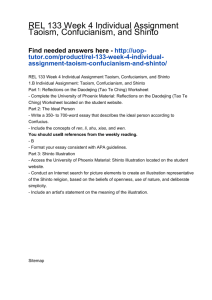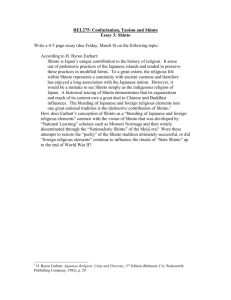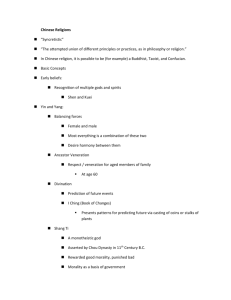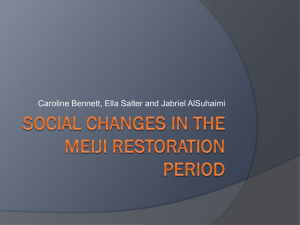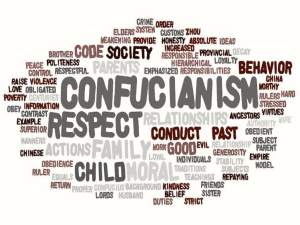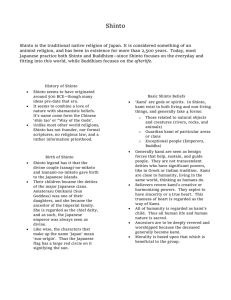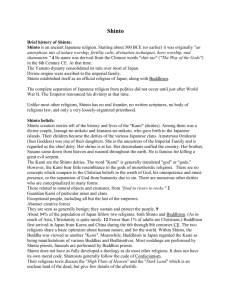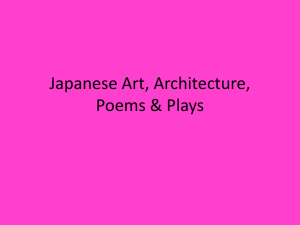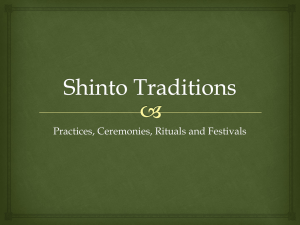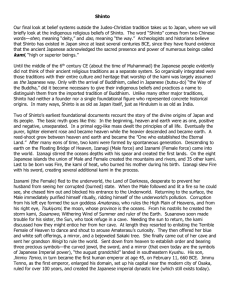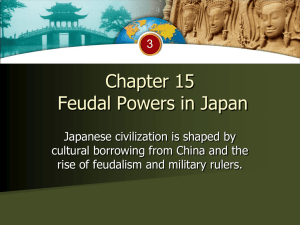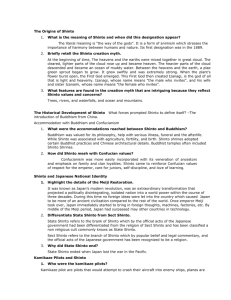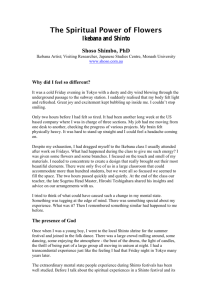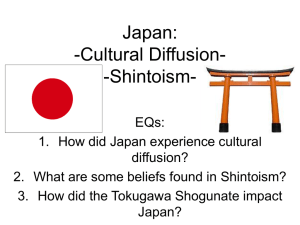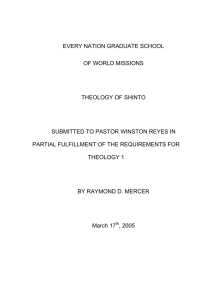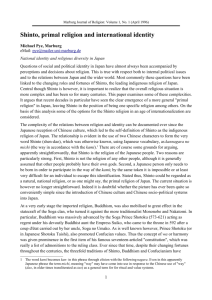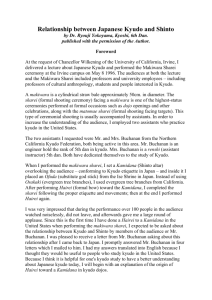How Shinto is Responding to Challenges in the Modern World
advertisement
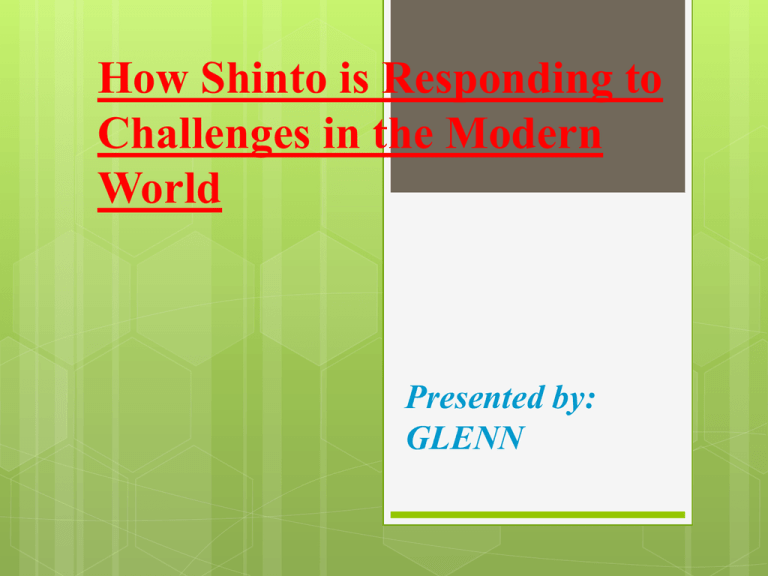
How Shinto is Responding to Challenges in the Modern World Presented by: GLENN Understanding the challenges facing Shinto as a religion is the best position to begin with in looking into the responses. This helps to know exactly what it is responding to. Shinto currently faces a myriad of problems: From a religious perspective, proliferation of other religions especially the monotheistic Christianity and Islam has dented the position of Shinto in Japanese culture. The two religions find Shinto as a pagan practice due to its lack of belief in a common and supreme being; God/ Allah (Robbins, 2004). To control the Christianity that was proliferating Japan, and which was making individuals to be more loyal to religion than to the state, Japanese were ordered to be Buddhists, just to crash the growing Christianity. Even though the practice ended, to date every Japanese household has a particular amount of allegiance to Buddhism especially where particular family members were buried. This was during the Tokugawa regime (between 1600 and 1868) when every household was supposed to be affiliated with a certain Buddhist temple. Shinto’s here were forced to be off from their religion (Oxtoby, 1996). The Meiji government however boosted Shinto by making it a state religion through support both financial and moral of the Shinto priests (Karan, 2005). The Meiji Restoration and political –administrative reforms helped Shinto cope with its disintegration that had began. Shrine Shinto gained national support and was separated from Buddhism. Shinto was placed on the same footing like the other religions by making shrines to be juridical individuals through the Religious Corporations Ordinance (Karan, 2005). The current economic rather than social world especially in the post world war two Japan has made majority of the citizens to be more sensitive to the economic more than the cultural trends. Shinto has been a religion that has ran deep in the family trees of all the Japanese that adhere to the religion. That has been one way of countering the influence of other religions. The cultural value attached to it through ancestors has made it remain still relevant and able to withstand the forces of other religions (Molloy, 2008). With each family being affiliated to a particular Shinto shrine, the families pass down the stories of their religious heritage and inclination to their descendants which ahs helped to preserve the religion and assisted it to cope withy the current pressures. The fact that the world has become more of a global village has made the Japanese tot ravel to new places where the Shinto religion is quite alien. This has been a problem especially for the Shinto Japanese in places like Europe and the US. (Lucas, & Robbins 2004). This however hasn’t hindered them from practicing their religion since they get replicas of their Shinto shrines wherever they go. They also send their children back in Japan to learn more of the same religion, understands the practices better and learn their family affiliation to their Shinto ways and shrines. References Karan, P. P. (2005). Japan in the 21st century: Environment, economy, and society.. Lexington: University Press of Kentucky. Lucas, P., & Robbins, T. (2004). New Religious Movements in the 21st Century Legal, Political, and Social Challenges in Global.. London: Routledge. Molloy, M. (2008). Experiencing the world's religions: tradition, challenge, and change (4th ed.). Boston: McGraw Hill Higher Education. Oxtoby, W. G. (1996). World religions: Eastern traditions. Toronto: Oxford University Press. Robbins, T. (2004). New Religious Movements in the Twenty-First Century Legal, Political, and Social Challenges in Global Perspective.. New York: McGraw-Hill/Irwin.
